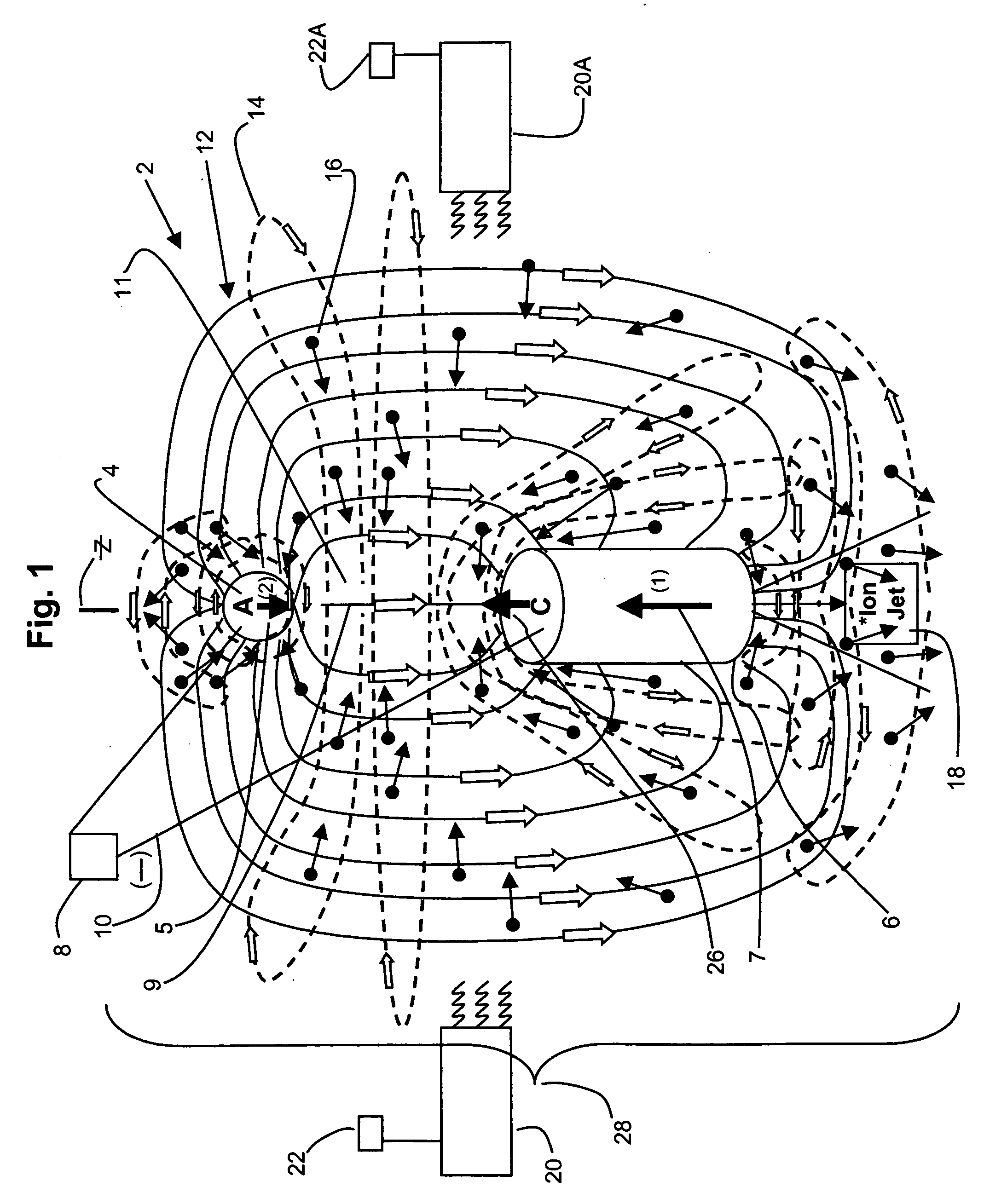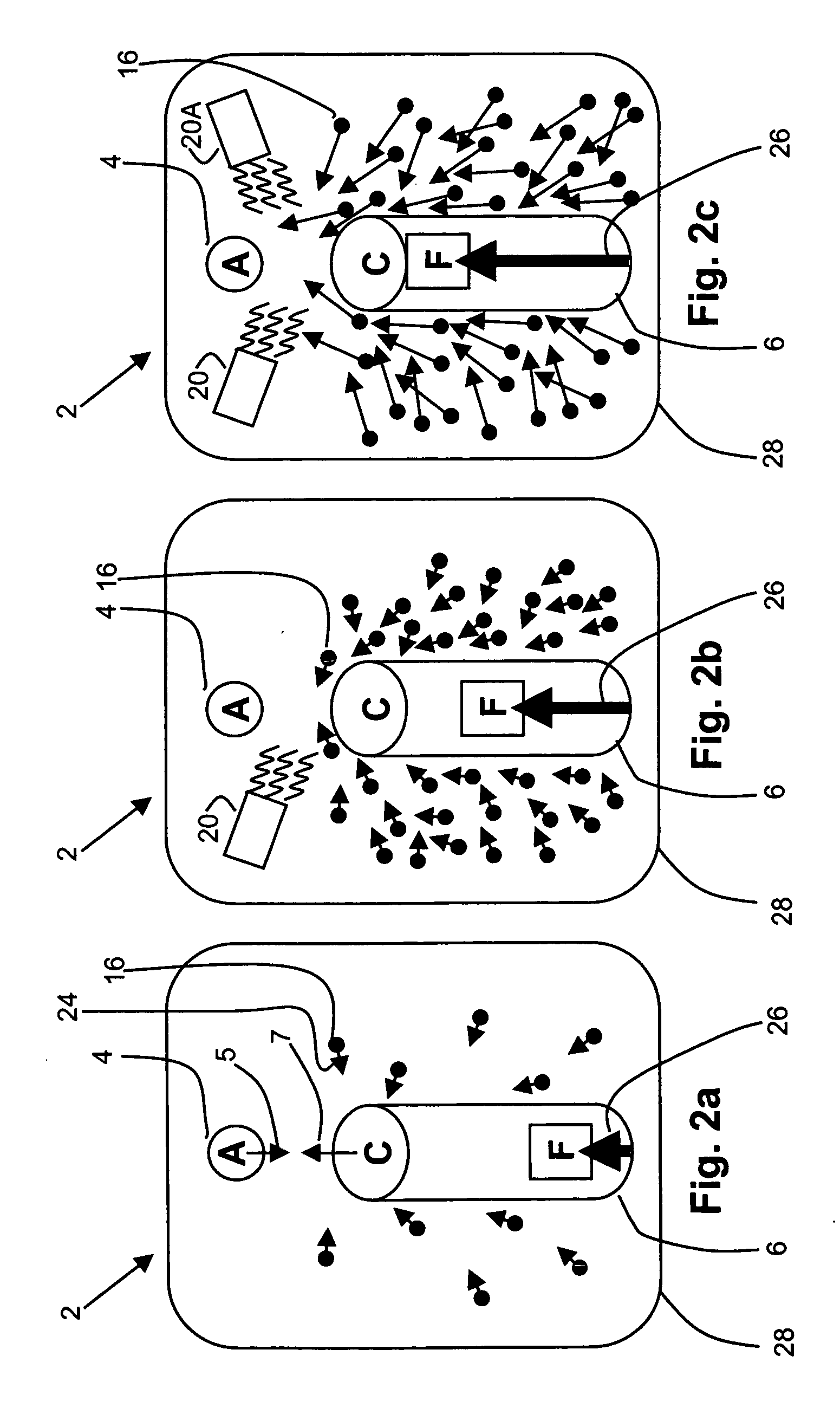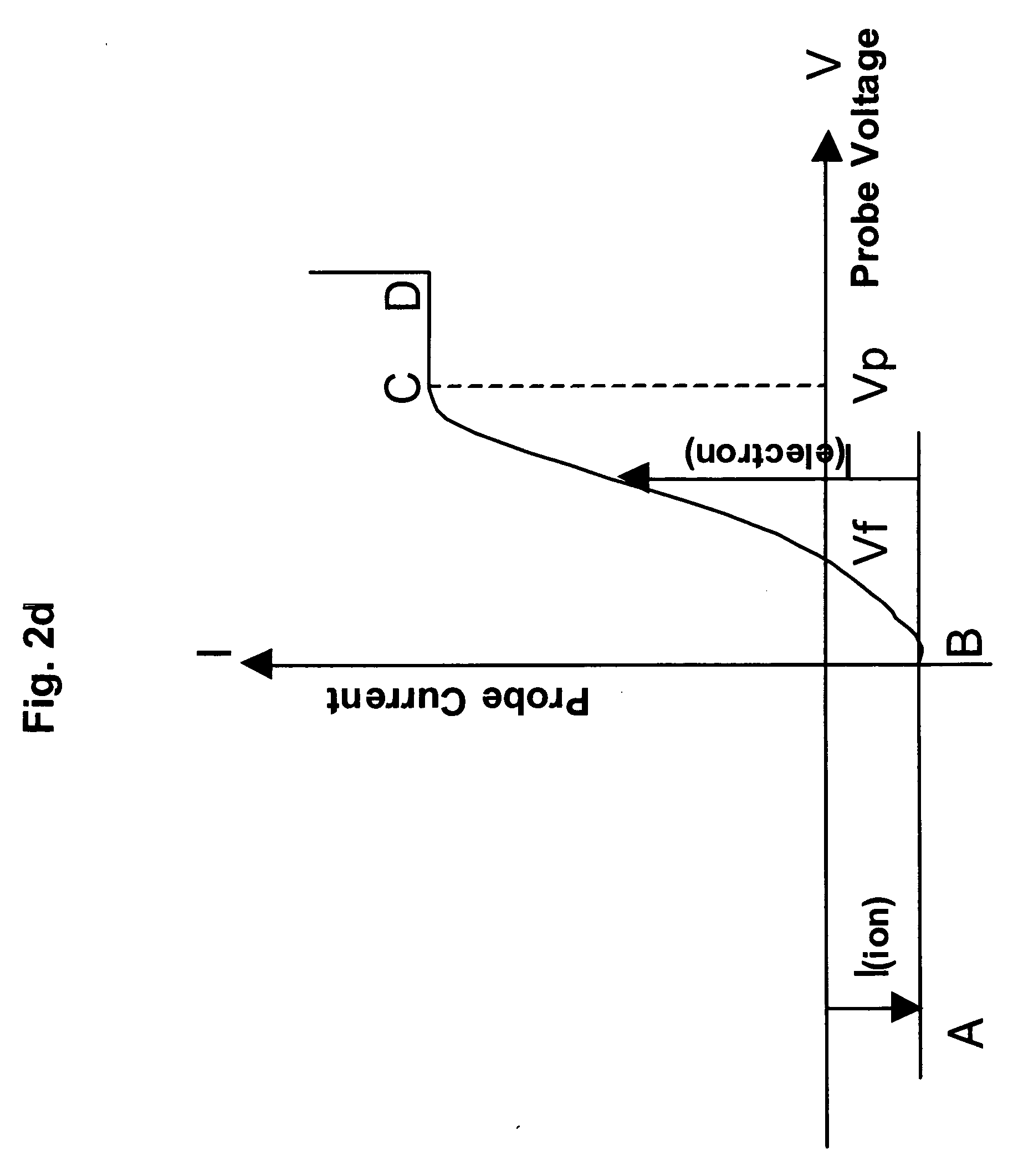System, apparatus, and method for generating directional forces by introducing a controlled plasma environment into an asymmetric capacitor
a technology of asymmetric capacitors and plasma environment, which is applied in the direction of generators/motors, machines/engines, vehicle maintenance, etc., can solve the problems of fuel consumption ratio, amount of energy required to produce motive force, and imbalanced force, so as to increase the motive force and increase the plasma density
- Summary
- Abstract
- Description
- Claims
- Application Information
AI Technical Summary
Benefits of technology
Problems solved by technology
Method used
Image
Examples
example 1
[0092] In at least one embodiment, electromagnetic radiation, such as photonic (including UV and / or IR) and RF energy can be delivered into a volume of the asymmetric capacitor system. The electrodes can be at least partially copper, aluminum, or other conductive material. One or more porous electrodes can be used to increase the total surface and the Bohm current. One or more (such as an annular array of LEDs) electromagnetic radiation sources are attached to locations above the anode, between the anode and cathode, under the cathode or any combination thereof to energize particles between the electrodes (that is at least somewhere in the surrounding fields of the electrodes). A further electromagnetic radiation source can be an RF emitter device using pulsed magnetrons with variable frequency. In some embodiments, 10 kW pulsed magnetrons with variable frequency are preferred. A commercial-off-the-shelf laser or LED array and RF device may be used. Advantageously, the method of att...
PUM
 Login to View More
Login to View More Abstract
Description
Claims
Application Information
 Login to View More
Login to View More - R&D
- Intellectual Property
- Life Sciences
- Materials
- Tech Scout
- Unparalleled Data Quality
- Higher Quality Content
- 60% Fewer Hallucinations
Browse by: Latest US Patents, China's latest patents, Technical Efficacy Thesaurus, Application Domain, Technology Topic, Popular Technical Reports.
© 2025 PatSnap. All rights reserved.Legal|Privacy policy|Modern Slavery Act Transparency Statement|Sitemap|About US| Contact US: help@patsnap.com



